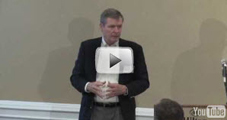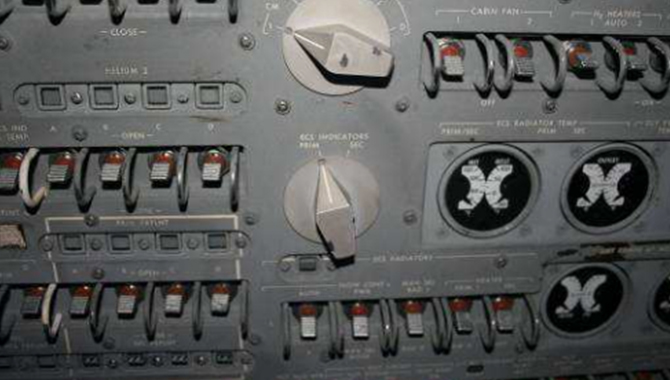November 24, 2009 Vol. 2, Issue 11
In November 1969, Apollo 12 successfully landed three astronauts on the Moon, but not without a shaky start. This month marks the anniversary of a valuable forty-year-old lesson — learned and unlearned.
On November 14, 1969, Apollo 12 sat on launch complex 39A at Kennedy Space Center (KSC). The weather was overcast with light rain and winds. At 11:22 AM, the spacecraft, carrying astronauts Charles Conrad, Richard Gordon, and Alan Bean, launched into the 30-mile wide blanket of cumulus congestus clouds, which topped off at 23,000 feet. Thirty seven seconds into launch, a major electrical disturbance occurred.
“What the hell was that?” asked Gordon. Twenty seconds of confusion ensued, and then another disturbance occurred.
“Okay, we just lost the platform gang,” reported Conrad, “I don’t know what happened here. We had everything in the world drop out.”
The two electrical surges temporarily knocked the spacecrafts fuel cells and navigation system off-line and permanently disabled nine non-essential instruments. It took another two minutes before the crew brought the fuel cells back online and Gordon reported that everyone was fine.
Bryan O’Connor, Chief of Safety and Mission Assurance, talks about lessons from AC-67. Click image to view video. (Video Credit: NASA)
“Okay,” said Conrad, “Now well straighten out our problems here. I don’t know what happened; I’m not sure we didn’t get hit by lightning.”
They had — twice.
Conrad later remarked, “Think we need to do a little more all-weather testing.”
In February of 1970, the Apollo 12 incident report about the lightning strikes echoed Conrad’s statement, concluding that atmospheric electrical hazards needed to be considered in greater depth for future Apollo flights. According to the report, the lightning was most likely triggered by an electrical conduction path created by the spacecraft and its exhaust plume as it entered into the electric field of the weather system above. The possibility that lightning could strike a launch vehicle had not previously been considered.
The report’s suggested corrective actions included actions to “minimize the probability of a lightning discharge by avoiding flight operations into conditions, which may contain high electrical fields.” It also provided the following launch restrictions:
- No launch when flight will go through cumulonimbus (thunderstorm) cloud formation. In addition, no launch if flight will be within 5 miles of thunderstorms cloud or 3 miles of associated anvil.
- Do not launch through cold-front of squall-line clouds which extend above 10,000 feet.
- Do not launch through middle cloud layers 6,000 feet or greater in depth where the freeze level is in the clouds.
- Do no launch through cumulus clouds with tops at 10,000 feet or higher.
Lessons Un-learned
Nearly twenty years later, on March 26, 1987, the Atlas Centaur-67 (AC-67) sat on a launch pad at Cape Canaveral. Thick clouds and thunderstorms hovered about the launch site. The rocket was to deliver the Fleet Satellite Communications (FLTSATCOM) F-6 spacecraft for the Department of Defense into orbit. Forty-nine seconds into launch, the spacecraft triggered lightning that caused the failure of the guidance, navigation and control (GN&C) system, resulting in a complete structural breakup. The entire payload was lost.
There were several reasons for the failure. First, there was a lack of effective communication and confusion among the team as to who was in charge and making decisions. Debate over the hazardous nature of the clouds, the reliability and robustness of the Atlas-Centaur spacecraft, and icing concerns stunted the decision-making process. The lessons from Apollo 12 were clouded by ambiguous weather reports and scattered communication. (See a Goddard Space Flight Center case study (PDF) and Bryan O’Connor’s presentation (PDF) on AC-67.)
Lessons Learned
Lightning struck KSC again on August 25, 2006, a few days before STS-115 Atlantis was scheduled to launch. The most powerful strike ever recorded at KSC hit one of the lightning protection system rods at launch complex 39B while the shuttle was sitting on the pad. Set to launch on August 27, managers made the decision to postpone the launch for 24 hours to assess any possible damage to the shuttle. The launch was postponed again for another 24 hours to further confirm that no damage had occurred.
Lightning strike aside, the STS-115 launch decision also had to involve addressing Tropical Storm Ernesto, which was headed in the direction of the launch site, and scheduling issues with the Russian space program. Ultimately, after several scrubs, STS-115 did launch into space on September 9, 2006. (See an interactive Academy case study.)
Mission Success
Ten minutes after the second bolt, when operations returned to normal and Apollo 12 was well on its way out the grasp of Earth’s gravity, Conrad remarked, “Well, I’ll tell you one thing. This is a first-class ride, Houston.”
Over the next ten days, the crew of Apollo 12 would go to the Moon and back. The lunar module performed a mostly automatic landing at the Ocean of Storms, a first at the time. They inspected and retrieved parts of the 1967 Surveyor 3 spacecraft, brought back lunar rocks, and set up experiments to measure various aspects of the Moon. The three astronauts safely returned home, splashing down on November 24, 1969.
Read the Apollo 12 Incident Report (PDF)
Read the Apollo 12 Flight Journal
Watch a video of the Apollo 12 launch.







